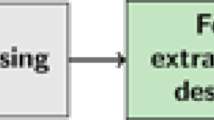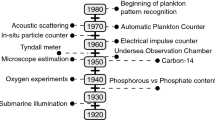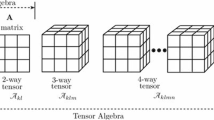Abstract
This paper gives the definition of the high-dimensional cross product and its calculation by extending the 3-D cross product definition into the high-dimensional vector space. Based on the properties of the cross product, the volume variance index (VVI) is proposed to be used in extracting automatically the endmembers of the hypherspectral imagery which eliminates the shortcoming of the traditional method of using simplex only where the extraction results were easily impacted by the abnormal pixels. A case study of endmembers extraction experiment using the VVI method with the AVIRIS data for Cuprite has shown a very good result.
Similar content being viewed by others
References
Boardman J W. Automating spectral unmixing of AVIRIS data using convex geometry concepts. In: Summaries of the Fourth Annual JPL Airborne Geoscience Workshop, AVIRIS Workshop. Pasadena, CA: Jet Propulsion Laboratory, 1993. 11–14
Boardman J W, Kruse F A, Green R O. Mapping target signatures via partial unmixing of AVIRIS data. In: Summaries of the V JPL Airborne Earth Science Workshop, Pasadena, CA, 1995
Craig M D. Minimum volume transforms for remotely sensed data. IEEE Trans Geosci Remote Sens, 1994, 32: 542–552
Bateson C A, Curtiss B. A tool for manual endmember selection and spectral unmixing. In: Summaries of the V JPL Airborne Earth Science Workshop, Pasadena, CA, 1993
Winter M E. N-FINDR: An algorithm for fast autonomous spectral end-member determination in hyperspectral data. In: Proc SPIE, 1999. 3753: 266–275
Neville R A, Nadeau C, Levesque J, et al. Hyperspectral imagery for mineral exploration: comparison of data from two airborne sensors. In: Proceedings of the International SPIE Symposium on Imaging Spectrometry, SPIE Vol. 3438, San Diego, California, 1998. 74–82
Roberts D A, Gardner M, Church R, et al. Mapping chaparral in the Santa Monica Mountains using multiple endmember spectral mixture models. Remote Sens Envir, 1998, 65: 267–279
Plaza A, Martinez P, Perez R M. Spatial/spectral endmember extraction by multidimensional morphological operations. IEEE Trans Geosci Remote Sens, 2002, 40: 2025–2041
Nascimento J M P, Dias J M B. Vertex component analysis: a fast algorithm to unmix hyperspectral data. IEEE Trans Geosci Remote Sens, 2005, 43: 898–910
Miao L D, Qi H R. Endmember extraction from highly mixed data using minimum volume constrained nonnegative matrix factorization. IEEE Trans Geosci Remote Sens, 2007, 45: 765–777
Author information
Authors and Affiliations
Corresponding author
Rights and permissions
About this article
Cite this article
Geng, X., Zhao, Y., Liu, S. et al. Matrix calculation of high-dimensional cross product and its application in automatic recognition of the endmembers of hyperspectral imagary. Sci. China Inf. Sci. 54, 197–203 (2011). https://doi.org/10.1007/s11432-010-4074-x
Received:
Accepted:
Published:
Issue Date:
DOI: https://doi.org/10.1007/s11432-010-4074-x




